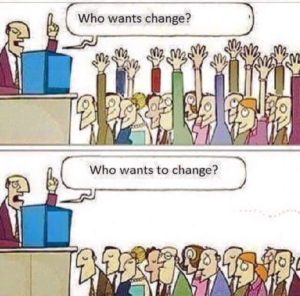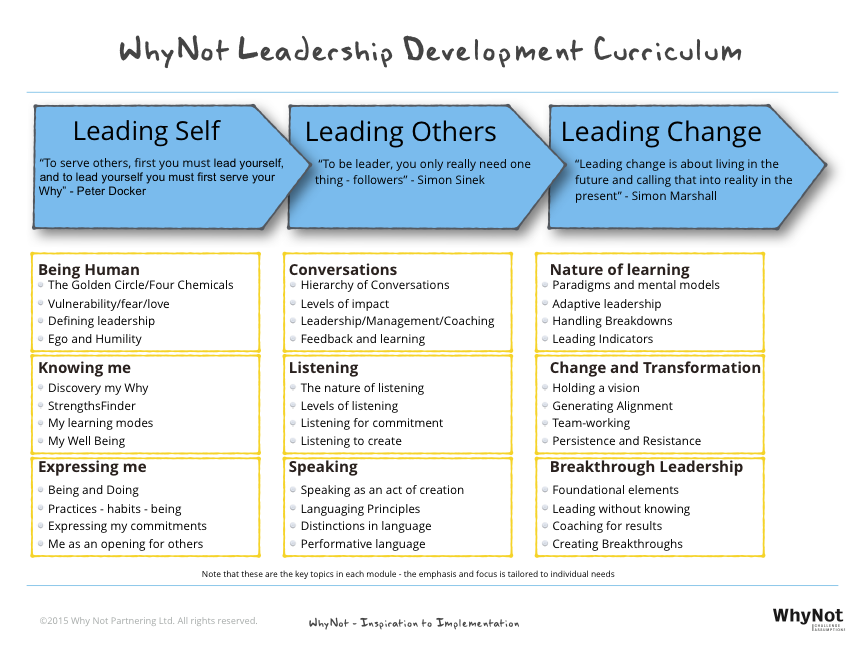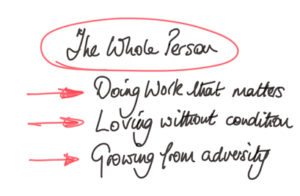Leadership & Team Development
Nº 135
There are Only Two Things in this World…
Let’s make things really simple. Run with me on this one – there are only two things in this world, Context and Content.
Content, the stuff we do, the work we take on, how we do it, all the conversations we have, the things in our lives…
Context, the meaning we make of all of the above.
Quite often organisations, departments, colleagues or employees, indeed customers or the community – however we chose to describe them – well actually they’re all just people, get drawn to focus on the Content – we get busy doing more stuff, after all it’s so tangible, (even addictive?) and it’s easy to measure…
…and we start to lose connection with the Context.
As we lose connection to the Context we start to lose connection to the meaning, the Why we do what we do on a daily basis.
And this gives us great access/opportunity. Quite often large shifts in groups of people in organisations can be achieved less by looking at the Content, (although that may be necessary) but more by redefining and reinvigorating the Context, the frame of reference within which people go about their work.
When people have more meaning for what it is they do each day, (and this connects with their personal values and beliefs) they can then choose themselves to do what is the right thing because they are connected to the bigger picture.
Then this leads us to the distinction we use about leadership and management. Management is about handling complexity, and there is a hell of a lot of complexity (content) that needs to be managed each day and that is the role of management, a hugely vital role. Leadership is about creating simplicity…
And that simplicity starts with a Why, because when people are very clear on the Why, the context or the bigger picture, they are better able to work out what is needed and how best to achieve it. And this is particularly important in Safety or any organisations where there is remote working or a distributed population – people who are working autonomously and may not be closely supervised. It is extremely important under these conditions that people have the simplicity of leadership – great clarity on the context, the Why, because they don’t always have someone to confer with (to remind them of the Why). They have to make decisions themselves to do the right thing on the spot (in isolation).
And so quite often for any organisation, the great opportunity is to create that simplicity through great leadership – it is an opportunity to release the next level of performance. We have a choice as to where to intervene next, do we turn up the volume on the management side, i.e. more tools, systems, processes etc. or do we turn it up on the leadership side? But here’s the important point – the more we lead, the greater the clarity of our cause, our belief, our higher purpose, our Why, the less we have to manage.
When we create the clarity of the Why we create a space into which people can step, and step up, which means that they can chose to relate differently to the content, what they do and who they do it for and relate to these things as ways to enable more of the Why.
So, this is where WhyNot tends to focus to release extraordinary potential/performance through people in organisations. Because most organisations that have been around a bit have got management cracked – if they didn’t have this sorted the organisation simply wouldn’t exist anymore. So, the biggest potential we see is in the leadership/context space, getting reconnected at a very human level to why you do what it is you do and supporting/enabling people to see what it is they do as a full expression of that.
Magic happens when Content turns into Context
Let me illustrate this by an example. We were asked to ‘train’ one Police Service’s 600 Supervisors and Sergeants in the Police Code of Ethics. This was a nationally defined program and all well thought through and valuable content, but of course existed for people initially as just more stuff to do. With our client, we took a different approach to simply training this group of people, we discovered and formulated the Service’s Why, by engaging all of the population in the process, led by the senior team and then introduced Ethics as a choice everyone could make to better fulfil on their Why. This group of people took on owning the Ethics as the Context from which they would do their work, rather than something they had to do. They then set up structures to discuss and learn what this meant for each individual and a sustainable and self-regulating process was established – ‘Police Ethics’ for people simple became who they are, and one way (a critical How) that enabled everyone to fulfil on their Why. In this way, for this group of people, Content had become Context.




 ©
©


